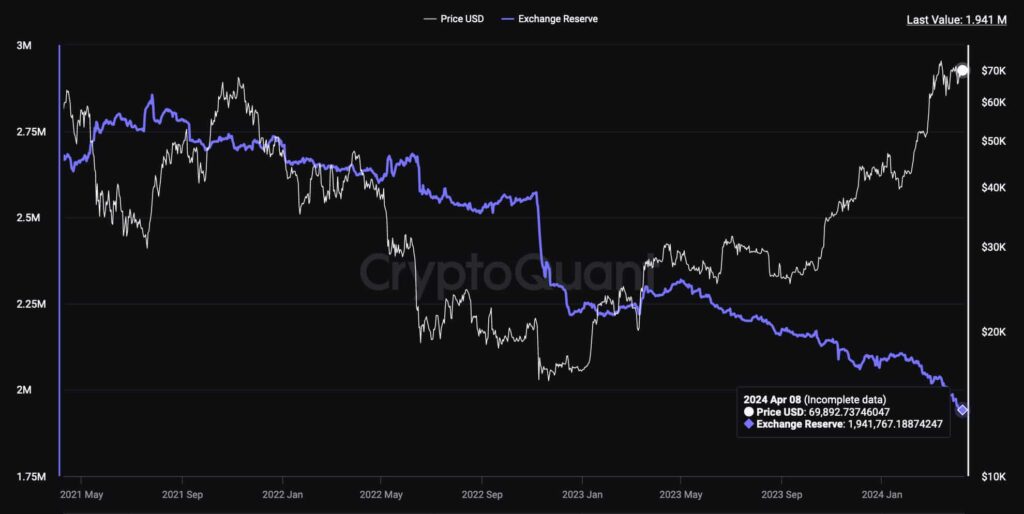Bitcoin Alert: Exchange Reserves Plunge to New Lows
In the early days of April, the cryptocurrency market witnessed a significant milestone as the Bitcoin (BTC) reserves held by exchanges plummeted to unprecedented lows, dipping below 2 million BTC. This development has left less than 10% of Bitcoin’s total circulating supply available on these platforms. Such a drastic reduction in available Bitcoin reserves presents a scenario where an upsurge in demand could potentially lead to a noticeable supply squeeze.
Detailed data procured from CryptoQuant on April 8 indicated that the sum total of BTC present in all recognized exchange wallets amounted to approximately 1.94 million BTC. This figure corresponds to nearly 9.8% of the total circulating supply of Bitcoin, which stands at 19.67 million coins as of the latest counts.
Observations reveal a consistent downward trend in exchange reserves since they reached a zenith of 2.85 million BTC in July 2021. This decrease is primarily attributed to Bitcoin investors opting to transfer their holdings out of the custody of exchanges, a strategic move that reflects a preference for long-term holding over immediate selling or trading.
At the moment, Bitcoin is trading at a price of $69,892, edging close to the psychologically significant threshold of $70,000.

Understanding Supply Shocks and Their Impact on Bitcoin Prices
A supply shock in the Bitcoin market is characterized by a swift reduction in the quantity of Bitcoin available for trading on exchanges, coinciding with a surge in demand. This imbalance between buying and selling pressures inherently leads to an increase in Bitcoin prices due to the heightened competition for the limited supply.
One pivotal cause behind a supply shock is the significant withdrawal of Bitcoin from exchanges, resulting in a scarce supply for trading, which, in turn, can precipitate a marked upswing in Bitcoin's market value.
Furthermore, the occurrence of the Bitcoin halving event approximately every four years significantly amplifies the effects of a supply shock. Post-halving, the reward for mining new Bitcoins is halved, thus reducing the influx of new coins into the market.
Bitcoin Magazine posits that these combined factors—the dwindling exchange reserves and the halving event—are setting the stage for an imminent supply shock for Bitcoin.
Consequently, the conjunction of a reduced rate of new Bitcoin generation with the ongoing decrease in exchange-held Bitcoin reserves is expected to intensify the economic dynamics at play. Consequently, the increasing demand against a backdrop of decreasing supply is likely to catalyze a pronounced escalation in Bitcoin prices.







